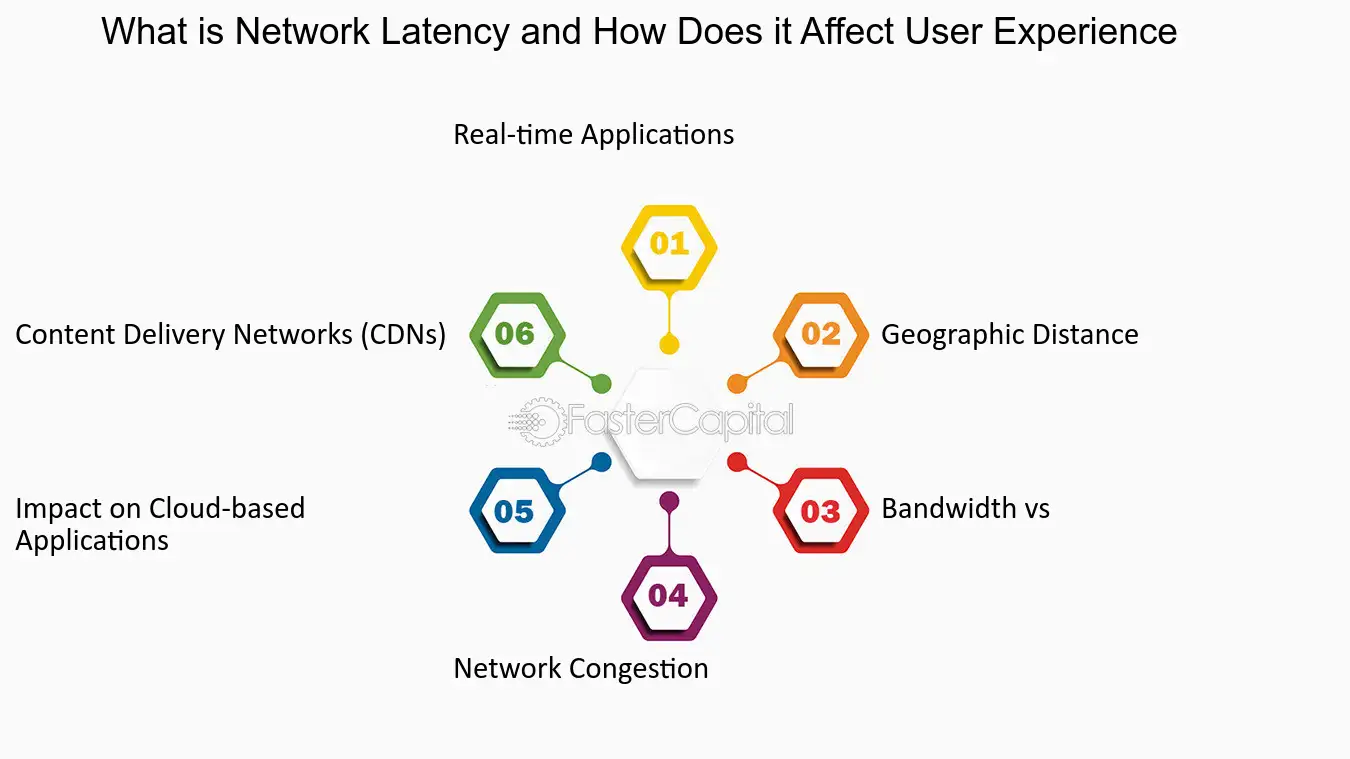When navigating the world of the internet, two critical terms often come into play: latency and bandwidth. Both significantly influence your online experience, affecting everything from browsing websites to streaming videos and playing online games. However, despite their importance, many people find these concepts confusing. This blog post aims to demystify latency and bandwidth, explaining what they mean and why they are crucial for your digital life.

What is Latency and Why is it Important?
Latency is essentially the delay between a user’s action and the internet’s response to that action. It’s a critical factor in determining the responsiveness of an online service. The importance of latency stems from its impact on user satisfaction and engagement; low latency translates to a faster and more responsive internet experience, which is vital for applications requiring real-time feedback, such as online gaming, stock trading platforms, and telemedicine services.
What is Bandwidth?
Bandwidth, on the other hand, is the volume of information that can be sent over a connection in a given amount of time, typically measured in megabits per second (Mbps) or gigabits per second (Gbps). Think of bandwidth as a highway with multiple lanes — the more lanes it has, the more traffic it can handle simultaneously without causing congestion. Higher bandwidth allows for faster data transfer, enabling smoother streaming of high-definition videos, quicker downloads, and more efficient browsing.
What is Latency vs. Bandwidth?
To understand the difference between latency and bandwidth, imagine you’re mailing letters through a postal service. Latency would be the time it takes for your letter to reach its destination, while bandwidth represents how many letters you can send at once. In internet terms, latency is the delay before a transfer of data begins following an instruction for its transfer, measured in milliseconds. Bandwidth, on the other hand, is the maximum rate of data transfer across a given path, measured in megabits per second (Mbps) or gigabits per second (Gbps).
The Significance of Bandwidth and Latency and Their Impact on User Experience
The significance of bandwidth and latency lies in their direct impact on how we experience the internet. Bandwidth affects the speed and volume of data we can download or stream at any given time, influencing activities like video streaming, downloading files, or browsing the web. Latency impacts the responsiveness of our online actions, crucial for real-time applications such as online gaming, video calls, or interactive web applications.
High bandwidth ensures that data-rich activities proceed smoothly without buffering or delays, providing a seamless experience when streaming high-definition videos or downloading large files. Low latency, conversely, ensures that the response times to our actions are quick, enhancing the performance of live interactions and reducing the frustration of waiting for websites to respond.
How Does Latency Affect User Experience?
Latency directly affects user experience by influencing the perceived speed and efficiency of an internet service. High latency leads to delays and lag, which can be particularly detrimental in scenarios that depend on real-time data or interactions. For example, in online gaming, high latency can mean the difference between winning and losing a game due to delayed reactions. In video conferencing, it can lead to awkward pauses and interruptions that hinder smooth communication. Thus, minimizing latency is essential for ensuring a fluid, frustration-free online experience.

How Bandwidth Affects You
Bandwidth is essentially the volume of data that can be transmitted over an internet connection in a specific amount of time. It’s like the width of a highway; the wider it is, the more cars (data) can travel simultaneously without causing traffic jams. Here’s how high or low bandwidth can impact your online activities:
- Streaming Video and Music: High bandwidth allows for smooth streaming of high-definition (HD) or 4K videos without buffering. If your bandwidth is limited, you may have to settle for lower quality to avoid constant pauses.
- Downloading and Uploading Files: Whether you’re downloading a new game, uploading videos to social media, or backing up files to the cloud, higher bandwidth means faster transfer rates. With low bandwidth, these activities can take much longer, potentially disrupting your workflow or leisure time.
- Web Browsing and Email: High bandwidth ensures that web pages load quickly, even if they contain high-resolution images or videos. On a low bandwidth connection, browsing can become a test of patience as you wait for content to gradually appear.
How Latency Affects You
Latency refers to the delay before data begins to transfer from your device to its destination and back. Imagine it as the reaction time of your internet connection. The lower the latency, the quicker the reaction time, which is crucial for:
- Online Gaming: Low latency is critical for gamers, as it means faster response times to in-game actions. High latency, or lag, can lead to a delay between your actions and the game’s response, putting you at a disadvantage in competitive play.
- Video Conferencing: In video calls, low latency helps ensure that conversations flow naturally without awkward pauses or delays, which can be critical for both business meetings and personal chats.
- Real-time Applications: For applications requiring instant updates or interactions, such as trading stocks online, remote desktop operations, or using real-time collaborative tools, low latency ensures that you receive timely information and can respond without delay.
The Combined Impact of Bandwidth and Latency
While bandwidth and latency are distinct measurements, their effects are intertwined when it comes to your overall internet experience:
- Streaming and Browsing: Even if you have high bandwidth, high latency can still cause initial delays in loading content. Conversely, low latency with insufficient bandwidth might result in quick starts but frequent buffering.
- Interactive Applications: For activities requiring both the quick transmission of data and the capacity to handle large volumes of it, such as live streaming your gameplay, the balance between bandwidth and latency becomes crucial. You need enough bandwidth to transmit high-quality video and low latency to interact with your audience in real time.
How to Improve Your Latency and Bandwidth
If you’re experiencing poor online performance, there are several steps you can take to improve both latency and bandwidth:
- Upgrade Your Internet Plan: If your current plan doesn’t meet your needs, consider upgrading to one with higher bandwidth.
- Optimize Your Router Setup: Place your router in a central location away from obstructions and interference to improve signal strength.
- Use a Wired Connection: Ethernet connections typically offer lower latency and more stable speeds compared to Wi-Fi.
- Limit Bandwidth-Hogging Applications: Close unnecessary applications and devices that may be consuming a significant portion of your bandwidth.
- Contact Your ISP: If issues persist, your Internet Service Provider (ISP) may be able to identify and resolve network-related problems affecting your latency and bandwidth.
Conclusion
Latency and bandwidth are key factors that shape your online experience. By understanding what these terms mean and their impact, you can take informed steps to optimize your internet setup, ensuring smoother browsing, streaming, gaming, and more. Remember, a balanced combination of low latency and high bandwidth is the secret to a seamless digital life.

